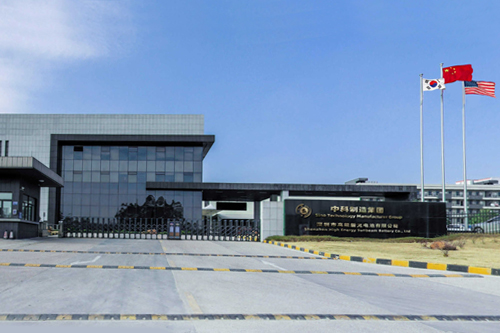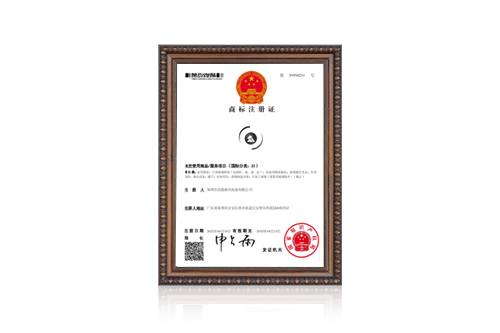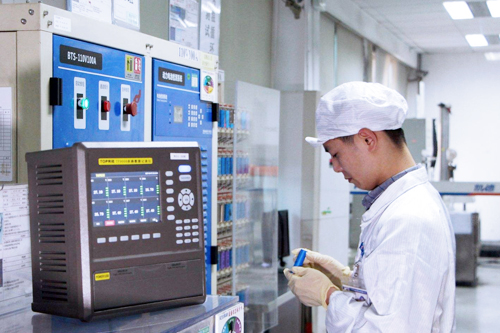Material Selection for Pouch - type Lithium - ion Batteries
Material selection is a fundamental aspect in the development of high -
performance pouch - type lithium - ion batteries. Each component requires
careful consideration of its properties to meet the battery's performance,
safety, and cost requirements.
1. Positive Electrode Materials
As mentioned before, there are several choices for positive electrode
materials. Lithium cobalt oxide (LiCoO₂) offers high energy density and good
cycling stability, but it has high costs and safety concerns due to cobalt's
toxicity and the risk of thermal runaway at high temperatures. Lithium nickel -
manganese - cobalt oxide (NCM) is a more cost - effective alternative. NCM with
different ratios of nickel, manganese, and cobalt (e.g., NCM 111, NCM 523, NCM
622, NCM 811) can be tailored to achieve different performance characteristics.
Higher nickel content in NCM generally leads to higher energy density but may
also pose challenges in terms of thermal stability. Lithium iron phosphate
(LiFePO₄) is known for its excellent safety, long cycle life, and low cost.
However, it has a relatively lower energy density compared to some other
positive electrode materials. The choice of positive electrode material depends
on the specific application requirements, such as in electric vehicles where
high energy density is crucial, or in stationary energy storage systems where
cost - effectiveness and safety are prioritized.
2. Negative Electrode Materials
Graphite is the most widely used negative electrode material in pouch -
type lithium - ion batteries. It has a well - defined crystal structure that can
reversibly intercalate lithium ions, providing stable charge - discharge
performance. However, there are also efforts to develop alternative negative
electrode materials. Silicon - based materials, for example, have a much higher
theoretical lithium - storage capacity compared to graphite. But silicon
undergoes significant volume expansion during lithium insertion and extraction,
which can cause electrode cracking and loss of electrical contact. To overcome
this, various strategies such as using silicon nanoparticles, composites with
carbon materials, or nanostructured silicon designs are being explored. Other
potential negative electrode materials include tin - based alloys and lithium -
metal anodes, but each has its own challenges in terms of cycle life, safety,
and cost.
3. Separator Materials
The separator in a pouch - type lithium - ion battery plays a vital role in
preventing short - circuits between the positive and negative electrodes while
allowing the passage of lithium ions. Porous polypropylene (PP) and polyethylene
(PE) are commonly used separator materials. These polymers have good chemical
stability, mechanical strength, and ion - permeability. They are often used in
the form of multi - layer structures, such as a PP - PE - PP trilayer, to
enhance their thermal stability. In recent years, there has been research on
developing advanced separator materials, such as ceramic - coated separators.
The ceramic coating can improve the thermal stability of the separator, reduce
the risk of thermal runaway, and enhance the battery's safety performance.
Additionally, there are efforts to develop non - woven fabric separators made of
materials like aramid fibers, which offer high mechanical strength and good
chemical resistance.
4. Electrolyte Materials
The electrolyte in a pouch - type lithium - ion battery consists of a
lithium salt dissolved in organic solvents. Lithium hexafluorophosphate (LiPF₆)
is the most commonly used lithium salt due to its high ionic conductivity and
good compatibility with other battery compo
Packaging Technology for Pouch - type Lithium - ion Batteries
The packaging technology of pouch - type lithium - ion batteries is crucial
for protecting the internal components, ensuring safety, and maintaining the
battery's performance over its lifespan.
1. Pouch Material Structure
The pouch used for packaging pouch - type lithium - ion batteries is
typically a multi - layer laminate structure. The outer layer is usually a
polymer film, such as nylon or polyester, which provides mechanical protection
and barrier properties against moisture and oxygen. The middle layer is a thin
aluminum foil, which offers good electrical insulation and mechanical strength.
The inner layer is a heat - sealable polymer, such as polypropylene or
polyethylene. This three - layer structure combines the advantages of each
material. The polymer outer layer protects the aluminum foil from corrosion, the
aluminum foil provides a barrier against gas and liquid penetration, and the
inner heat - sealable layer allows for easy and reliable sealing of the pouch
during battery assembly.
2. Sealing Techniques
There are several sealing techniques used for pouch - type lithium - ion
batteries. Heat - sealing is the most common method. In heat - sealing, the
edges of the pouch are heated to a specific temperature, causing the inner heat
- sealable polymer layer to melt and bond together. The temperature, pressure,
and time of heat - sealing are carefully controlled to ensure a strong and leak
- tight seal. Another sealing technique is ultrasonic sealing. In ultrasonic
sealing, high - frequency ultrasonic vibrations are applied to the pouch edges.
The vibrations generate heat due to friction, melting the inner polymer layer
and creating a seal. Ultrasonic sealing can provide a faster and more precise
sealing process compared to heat - sealing. In some cases, adhesives may also be
used in combination with heat - sealing or ultrasonic sealing to further enhance
the sealing performance. However, the adhesives need to be carefully selected to
ensure they are compatible with the battery components and do not degrade the
battery performance over time.
3. Safety Features in Packaging
The packaging of pouch - type lithium - ion batteries is designed with
several safety features. One important safety feature is the inclusion of a
pressure - relief valve or vent. In case of over - charging, over - discharging,
or internal short - circuits, the battery may generate gas, leading to an
increase in internal pressure. The pressure - relief valve is designed to open
at a pre - determined pressure, releasing the gas and preventing the battery
from bursting. Some advanced pouch designs also incorporate flame - retardant
materials in the packaging to reduce the risk of fire in case of thermal
runaway. Additionally, the packaging can be designed to be puncture - resistant
to prevent damage from external objects, which could potentially cause short -
circuits and safety hazards.
4. Hermeticity and Long - Term Stability
Maintaining the hermeticity of the pouch - type lithium - ion battery is
crucial for its long - term stability. Moisture and oxygen can penetrate the
pouch over time and react with the battery components, especially the
electrolyte and electrodes, leading to a degradation of battery performance. To
ensure good hermeticity, the sealing quality of the pouch needs to be high, and
the barrier properties of the pouch materials need to be optimized. Regular
testing of the battery's hermeticity during production and storage is also
important. This can be done using techniques such as helium leak testing, where
helium gas is introduced into the battery, and any leakage
nents. However, it is sensitive to moisture and can decompose at high
temperatures, leading to the formation of harmful by - products. Therefore,
there is a search for alternative lithium salts, such as lithium
bis(fluorosulfonyl)imide (LiFSI), which has better thermal stability and higher
ionic conductivity. The organic solvents used in the electrolyte, such as
ethylene carbonate (EC), dimethyl carbonate (DMC), and ethyl methyl carbonate
(EMC), need to have a balance of properties. They should have a high dielectric
constant to dissolve the lithium salt effectively, low viscosity to ensure good
ion mobility, and a wide electrochemical window to prevent oxidation and
reduction reactions at the electrodes.
Read recommendations:
Coin Battery CR 2330
Advantages of 18650 lithium battery.energy storage battery for solar system
36v 7.5ah lithium ion battery pack.What is better, lead or lithium?
energy storage battery for solar system company
li ion 18650 battery pack











































 360° FACTORY VR TOUR
360° FACTORY VR TOUR
 Whatsapp
Whatsapp
 Tel
Tel Email
Email TOP
TOP